The new Intel chipset – ASRock B460 Steel Legend give users great stability, a boatload of features, and an attractive design, all while keeping the price quite low. This is a 30.5 x 24.4 cm ATX factor product equipped with a Intel B460 chipset, and it offers such features as 9 -phase power design, 2.5-gigabit ethernet (Dragon RTL8125BG), and very sleek design. It’s priced at about SGD$ 235 with 3 Years limited warranty.
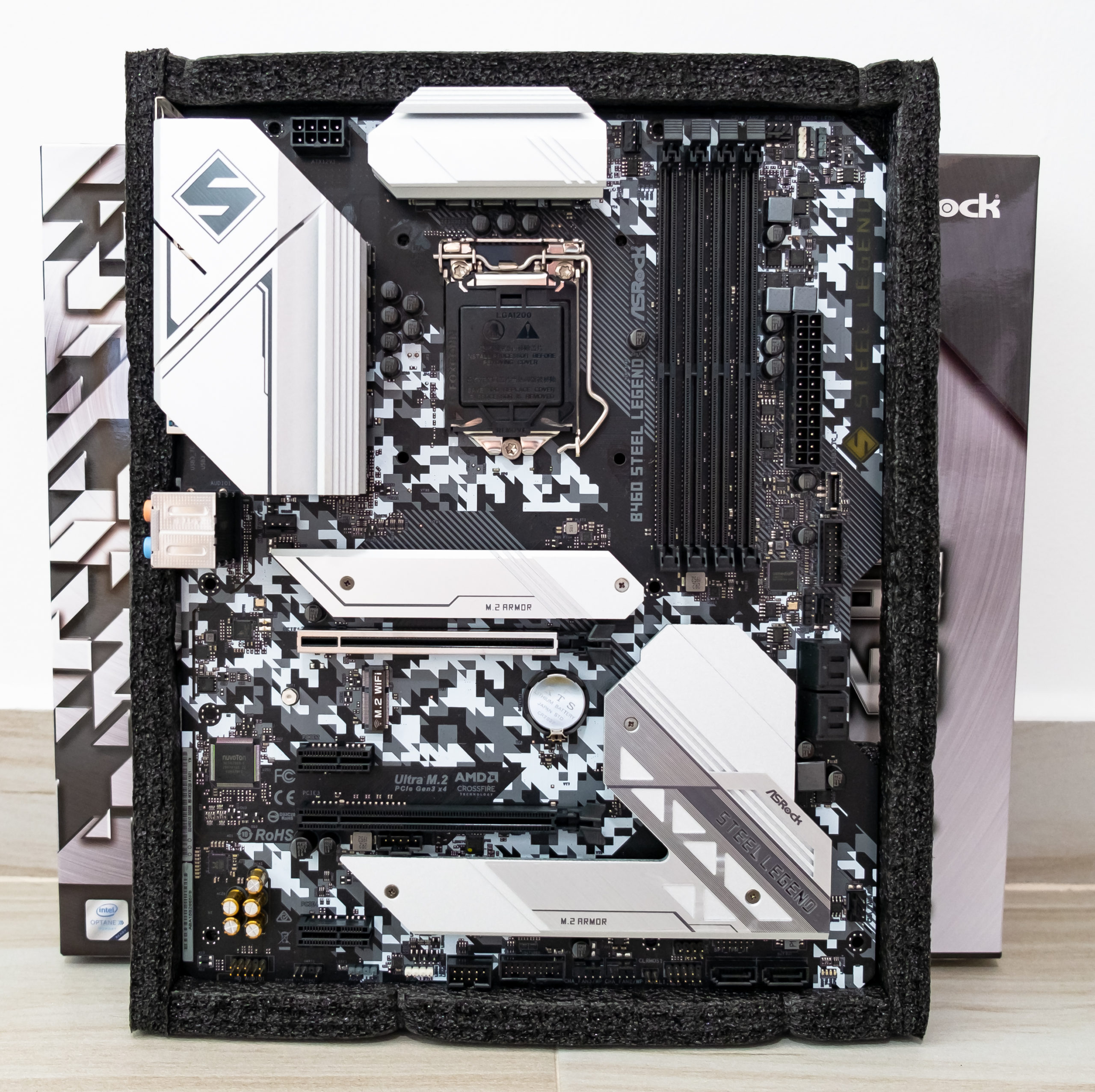
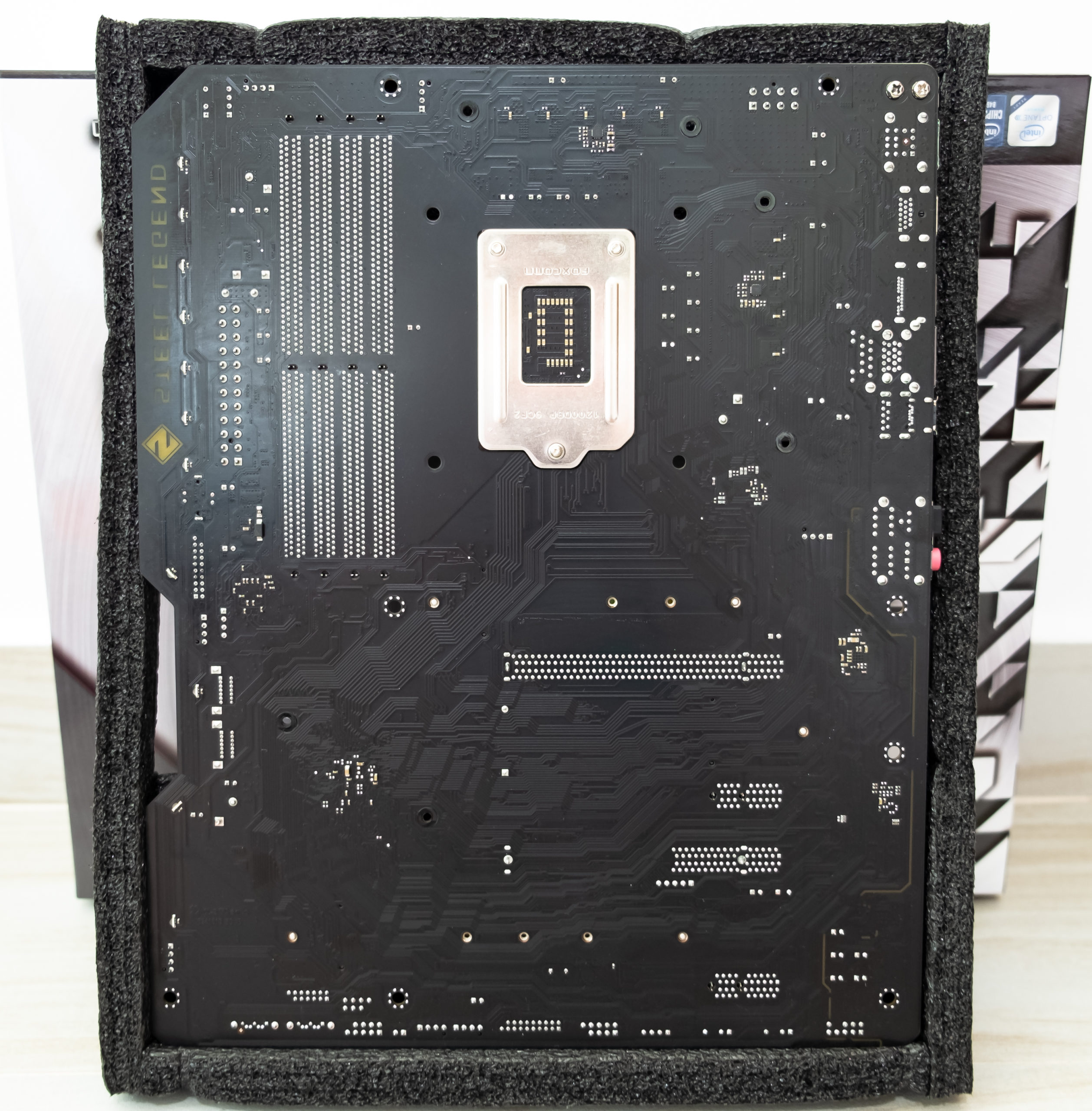
The B460 chipset is capable of implementing up to 14 USB ports of all types, but USB 3.1 Gen1 / 3.1 should not exceed 10, and USB 3.1 Gen2 should not exceed 6.
The rear panel still have a standard video outputs HDMI 1.4 and Display Port 1.2 – in case you want to use the integrated video core, which is available in the vast majority of modern Intel processors.
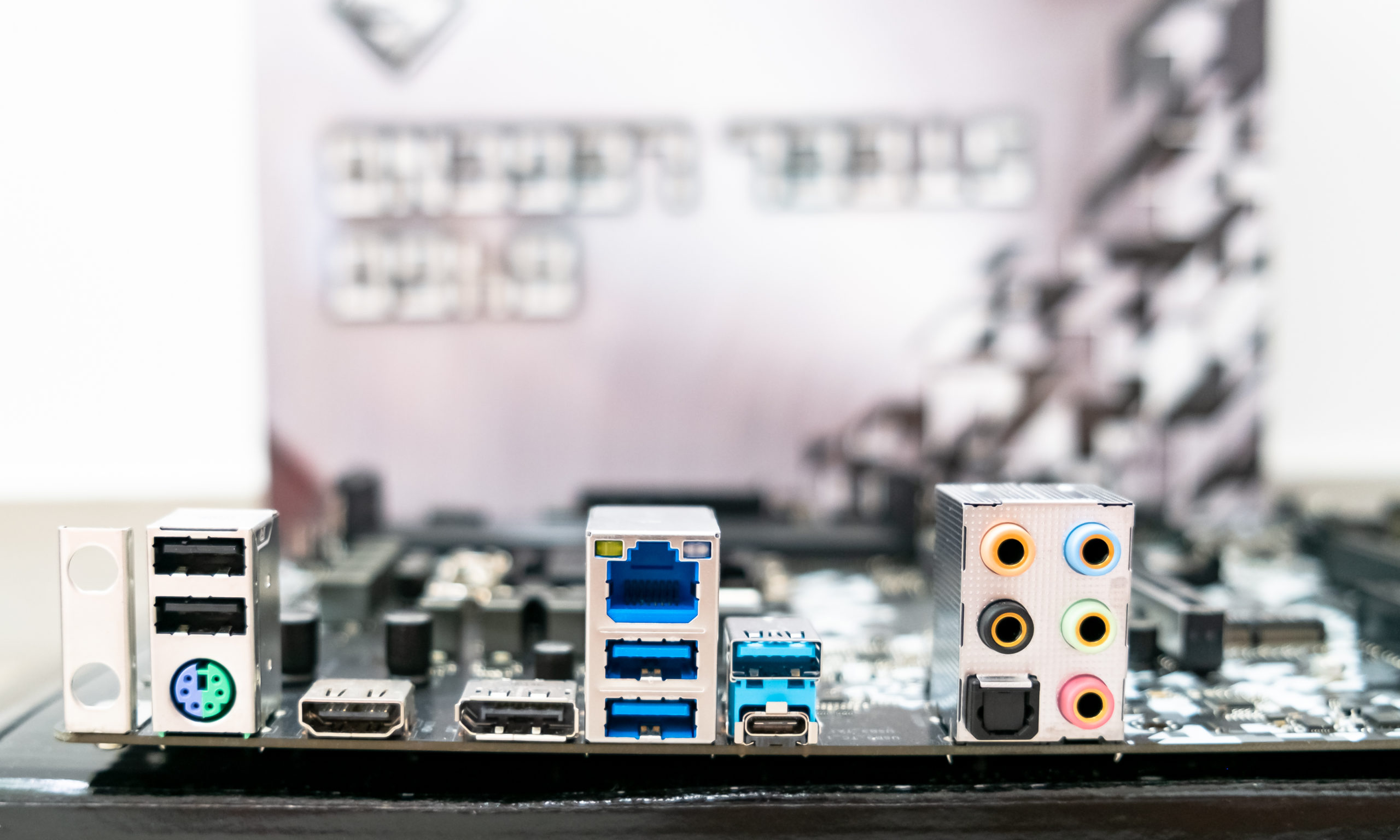
What do we have? There are 13 USB ports on the motherboard:
- 2 USB 3.1 Gen2 ports (fastest to date): all implemented through the B460 and presented on the rear panel with 1 Type-A port (blue) 1 port Type-C (both are equipped with fast charging function using the optional ASM1543 controller from ASMedia;
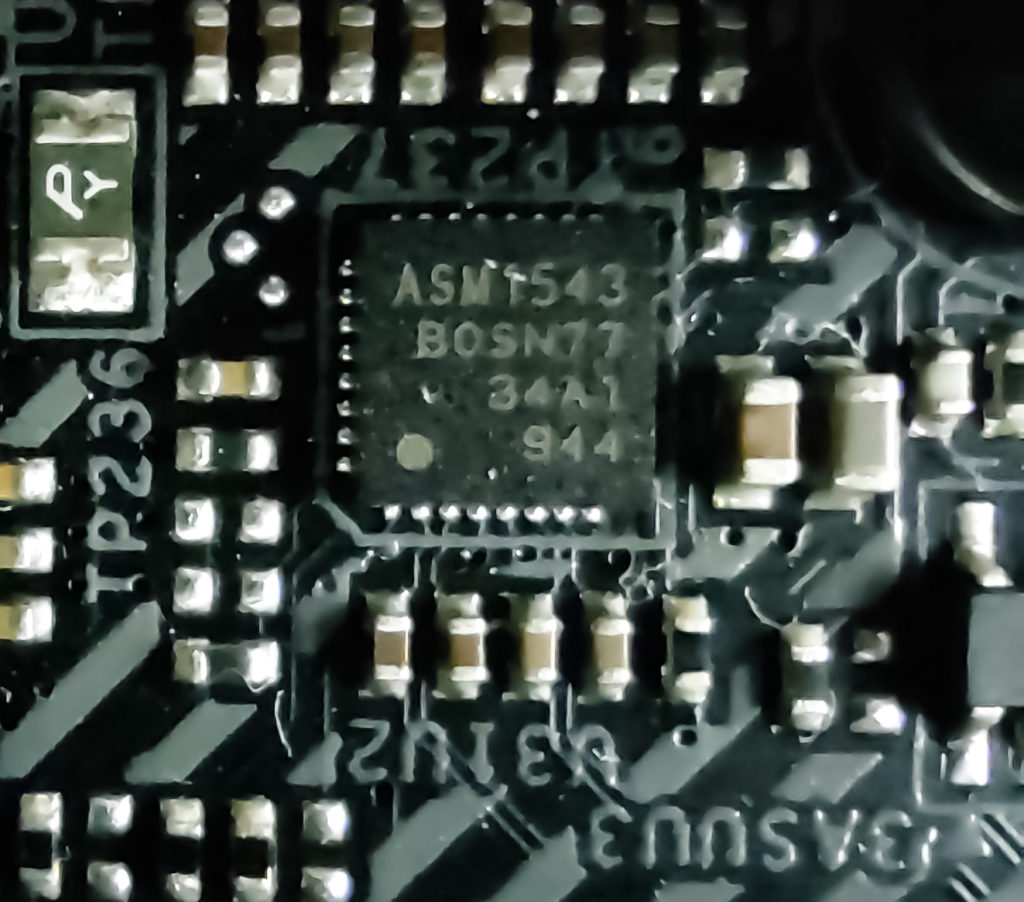
- 6 USB 3.1 Gen1 ports: implemented through the B460 and represented by 2 Type-A ports on the rear panel (blue) and 2 internal connectors on the motherboard (each for 2 ports)
- 5 USB 2.0 / 1.1 ports are implemented through the B460 and are represented by 2 Type-A ports (black) on the rear panel and 2 internal connectors (one for 2 ports, the other for 1 port).
- So, through the chipset, 2 USB 3.1 Gen2 + 6 USB 3.1 Gen1 + 5 USB 2.0 = 13 ports are implemented. That is, the capabilities of the B460 are used almost to the maximum (it was possible to implement another USB 3.1 Gen2 on the rear panel). And there is no need for third-party USB port controllers.
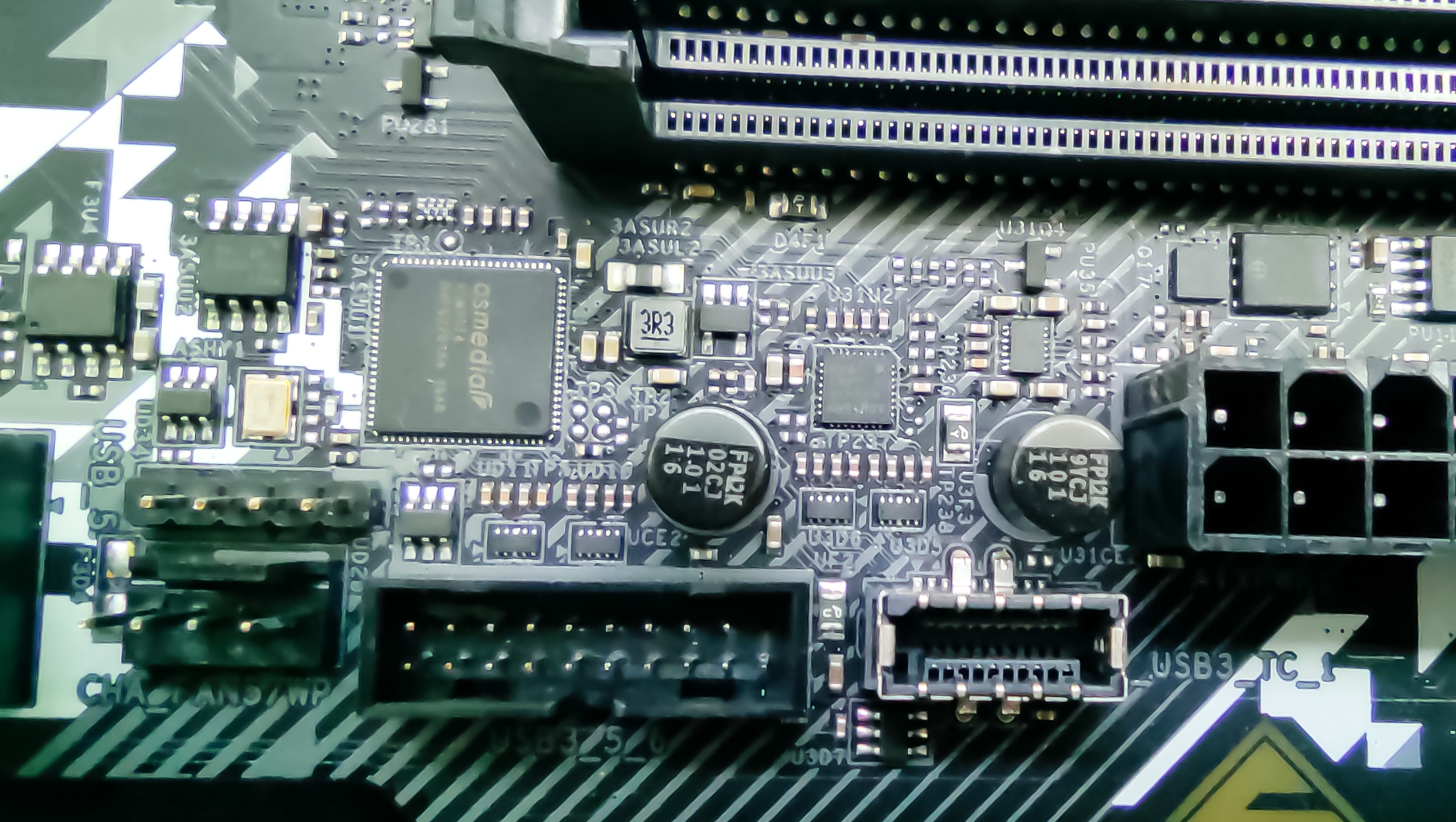
The Realtek Dragon RTL8125BG 2.5 Gigabit LAN network controller.
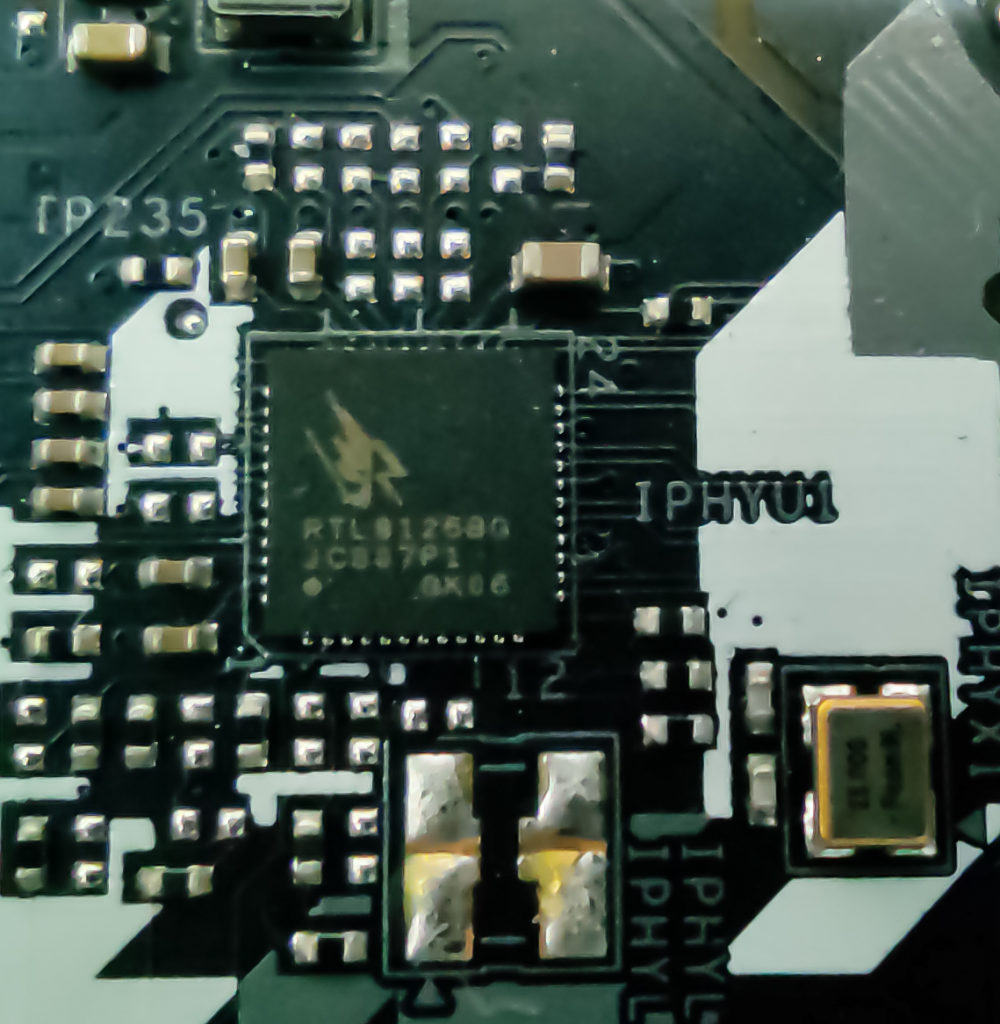
On the motherboard, you can find an aluminium-alloy heatsink top cover that effectively improves heat dissipation from the power delivery and the PCB has 2-ounce copper inner layers that provide stable signal traces and power shapes, thus delivering lower temperature and higher energy efficiency. For the colour theme: matte black with sliver, to match the premium components.
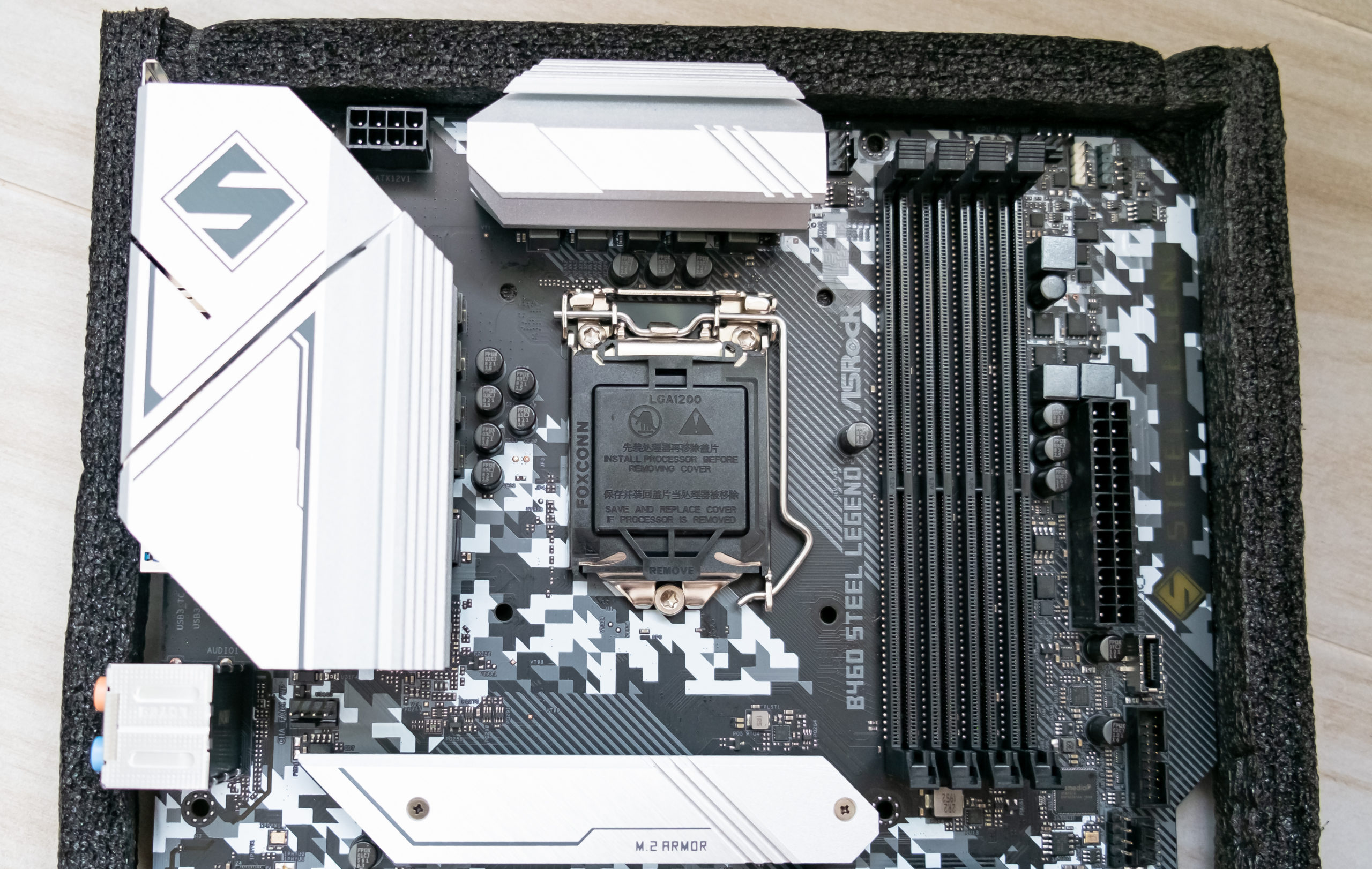
The power phase is very impressive for this segment of the market: a premium 60A Power Choke, with 9-phase power design, Nichicon 12K Black Caps (100% Japanese made, high-quality conductive-polymer capacitors) that should really help handle even the most demanding CPUs such as the 10-Cores i9-10900K.
 Nine Vishay 50A SiC654 MOSFETs of the Dr.MOS Power Design Power Stage, which are responsible for the power supply of the Intel Comet Lake-S processor on the Intel LGA 1200 socket.
Nine Vishay 50A SiC654 MOSFETs of the Dr.MOS Power Design Power Stage, which are responsible for the power supply of the Intel Comet Lake-S processor on the Intel LGA 1200 socket.
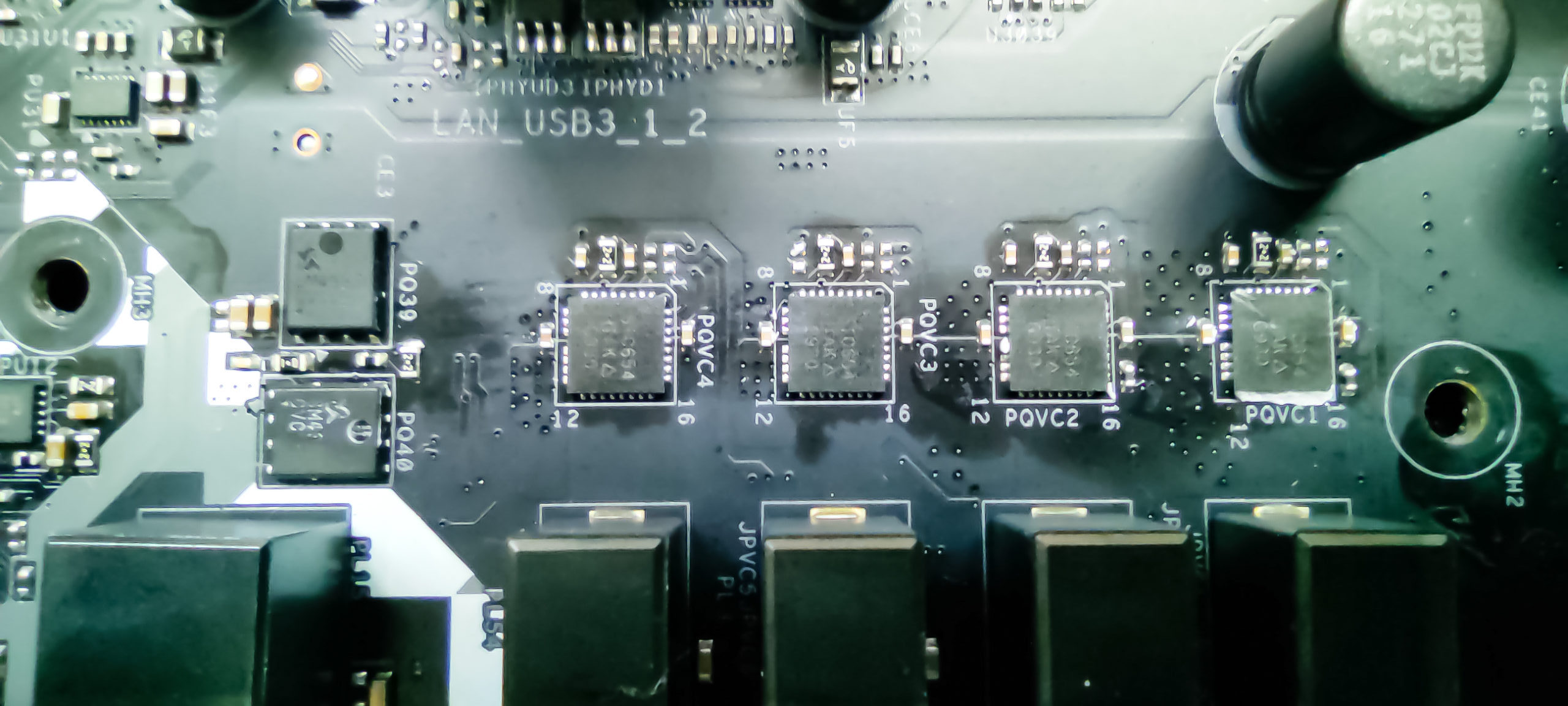
This PWM controlled by the uP9521P digital controller from uPI Semiconductor. That is 4+2 true phases controlled by the PWM controller with the four phases doubled to eight by the two uP1911R doublers at the back of the board. Combining the 8+2 phase solution controlled by the uP9521p and the 1 additional phases controlled by dual Richtek RT8120B controllers, the total solution is 8+1+1 in the format vCore, iGPU, and VCCSA & VCCIO shared one phase. However, the VCCAS and VCCIO using difference power phase from Vcore and it’s powered by sinopower SM4337.
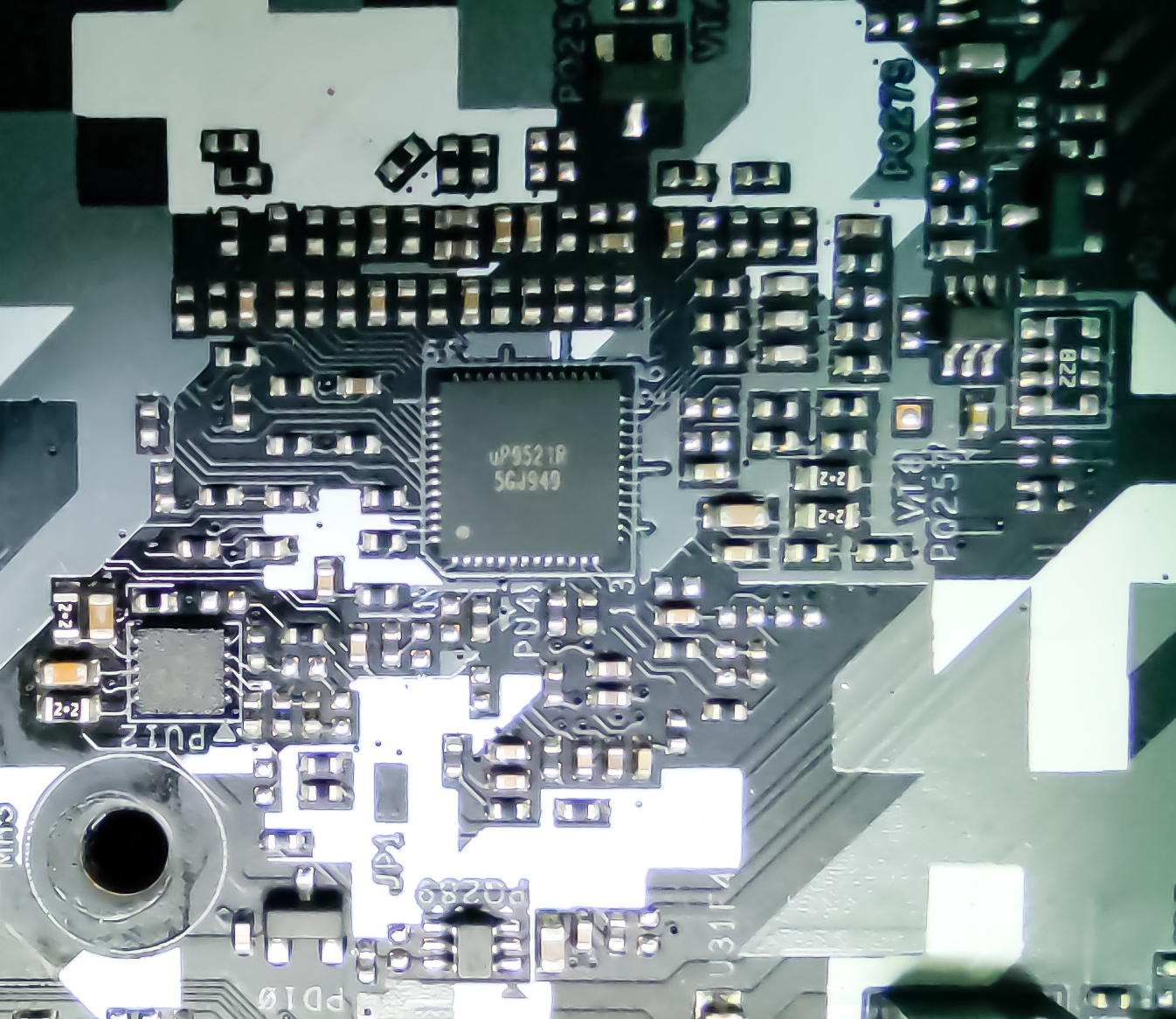
The board has 4 slots: 2 PCI-E x16 (for video cards or other devices) and 2 PCI-E x1.
The processor has 16 PCI-E 3.0 lanes, they go only to the first PCI-E x16 slot, the second “long” slot always gets x4 from the B460 chipset.
Based on these conditions, we conclude that the operation of Nvidia SLI on this motherboard is impossible. Only a single video card can fully have 16 PCI-E lanes, and if you install two video cards, combining them into AMD CrossFire, it will be x16 + x4. Will this decrease in the number of lines on the second “long” slot severely impact performance in general? – We believe that yes, it is strong, and there is no expediency in such a tandem.
The distribution of PCI-E lines between slots in the case of using more than one video card is not required, so there are no multiplexers.
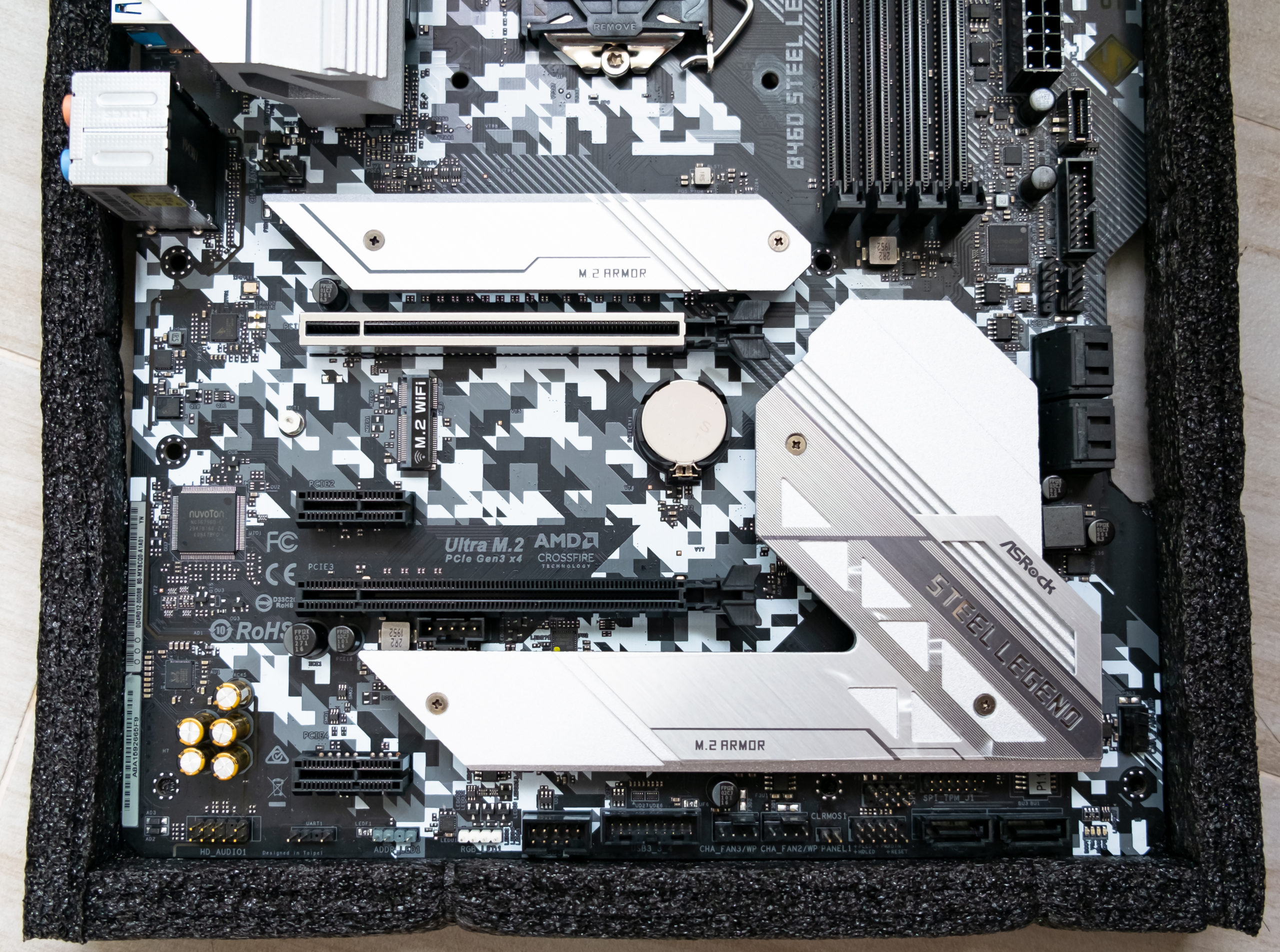
And again, the “premium” of this motherboard is striking: only the first PCI-E x16 slots have a metal “casing” and additional soldering points (it is well known that powerful modern video cards can be very heavy, and only a couple of video cards are equipped with stand holders manufacturers).
It can be noted that the first PCI-E slot is moved away from the socket, which makes it easy to mount processor cooler of any level and class. On the other hand, it is obvious that the first M.2 PCI-Ex1 WIFI slot after PCI-Ex16 will almost always be inaccessible due to the fact that now 90% of video cards (even in the budget segment) occupy 2 slots in width. Yes, of course, now there are not so many PCI-Ex1 expansion devices, so ASRock convert the stand PCI-E x1 slot into M.2 slot for WIFI usage and this will be very useful for adding additional Intel WIFI AX201 card into this board.

In total, the board has 6 Serial ATA 6 Gb / s connectors + 3 slots for drives in the M.2 form factor. (one of the M.2 slot for Wi-Fi / Bluetooth wireless controllers.)
All 6 SATA6 ports are implemented through the B460 chipset. Probably for the convenience of placing cables, the SATA ports are divided into 2 groups: 4 ports are located horizontally and are located on the right side near the cutout in the PCB, and 2 more ports (vertical orientation) are located at the bottom of the board.
Two M.2 slots support all modern types of drives in this form factor, with PCI-E and SATA interfaces.

The chipset does not have enough I / O ports for everyone, so traditionally you have to share hardware resources between devices. For this board, the M2_2 (bottom) slot in the case of using a SATA drive shares the lines with the SATA3_0 port. The M2_1 slot divides the lines only in one case: if we use a PCI-E drive, then all SATA is fully available, and if we use an M.2 SATA drive, then SATA3_5 will be cut down. You can install Intel Optane Memory modules in any M2_1 & M2_2 slot. Both M.2 slots have heatsinks with thermal interface, which is very unusual for a relatively budget motherboard.

There are indicator lights that indicate problems with a particular system component. After turning on the computer enter into OS boot, all indicators will be gone, then there are no problems with the components. This is a very useful feature for troubleshooting.
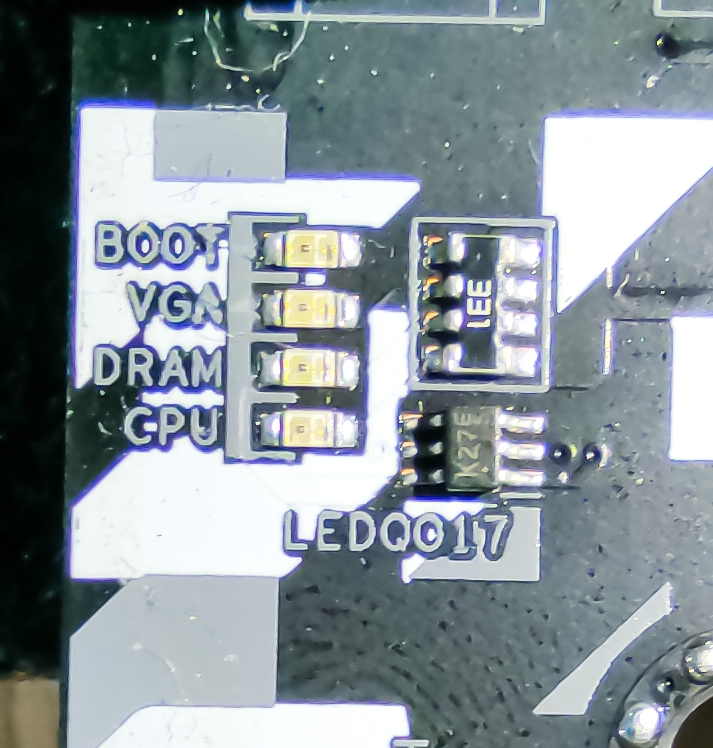
The audio codec Realtek ALC1220 manages the sound. The audio is very simple and no dedicated DACs in the circuit – ALC1200, but it still provides audio output according to schemes up to 7.1 . The “audiophile” capacitors Nippon Chemicon are still used. The audio path is placed on the corner of the board, does not intersect with other elements, the left and right channels are routed to different layers of the printed circuit board. All audio connectors are gold-plated, while the usual color of the connectors is preserved.
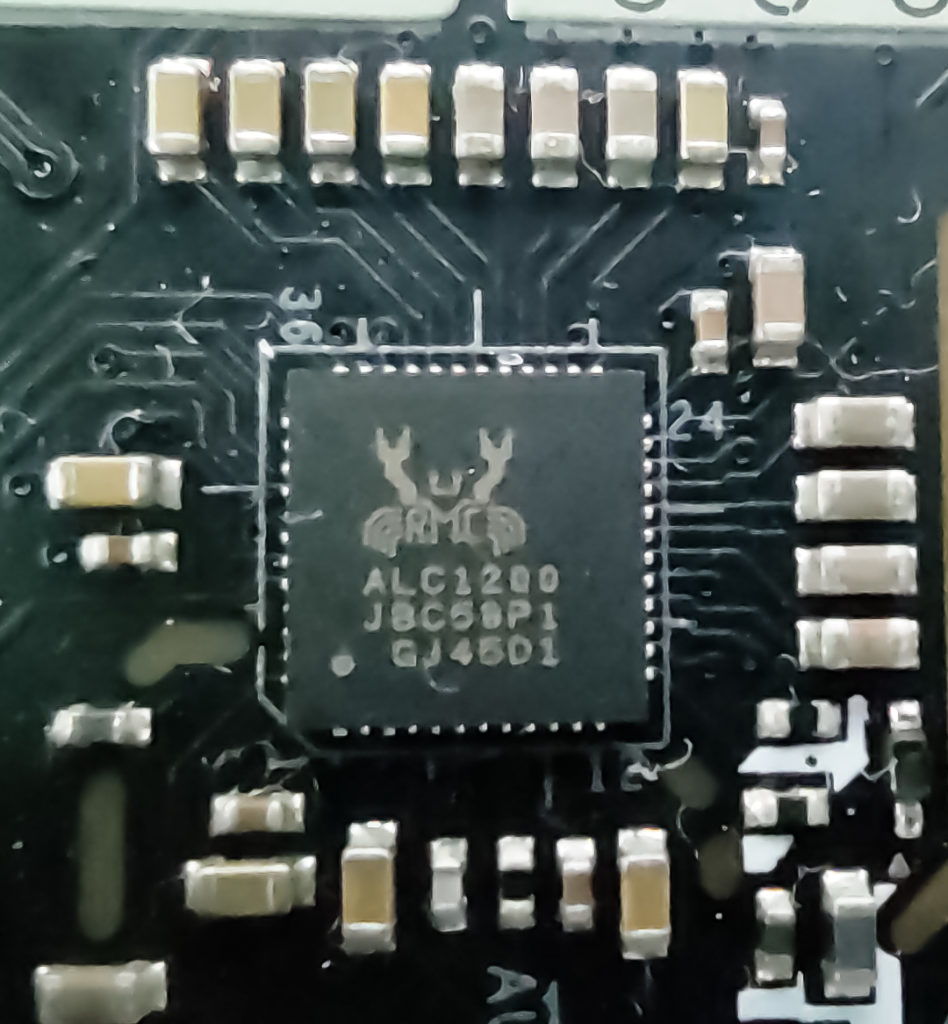
Control over the synchronization of the RGB / ARGB backlighting is assigned to the NUC121ZC2 chip from Nuvoton (ARM-, it also monitors the state of the board.
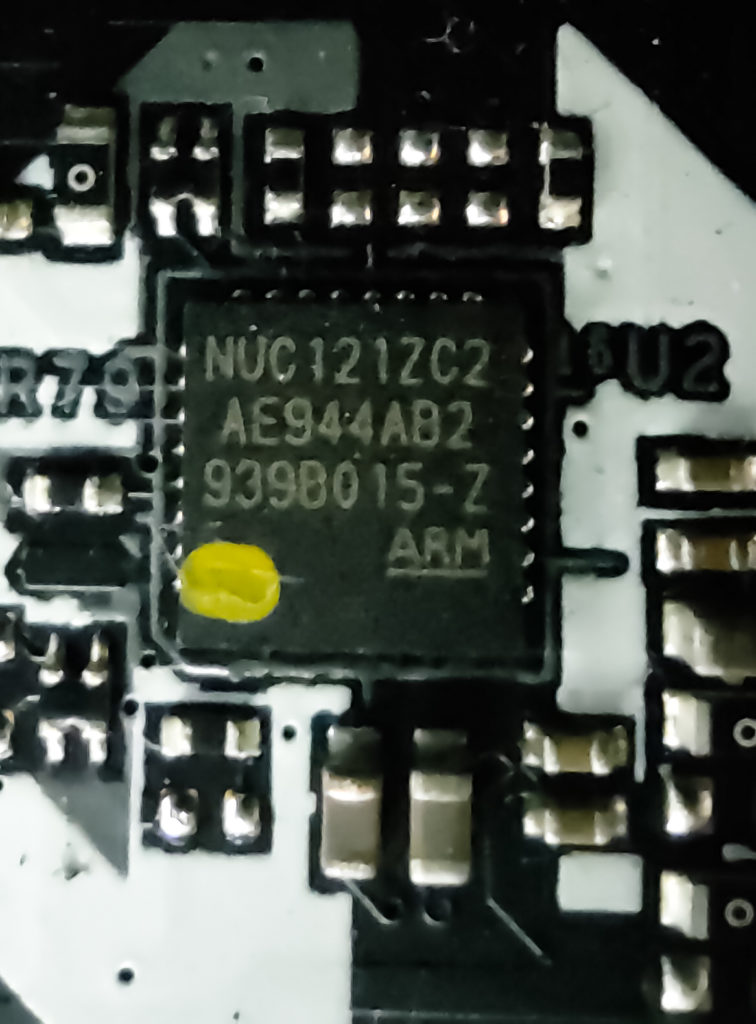
Layout of the board:
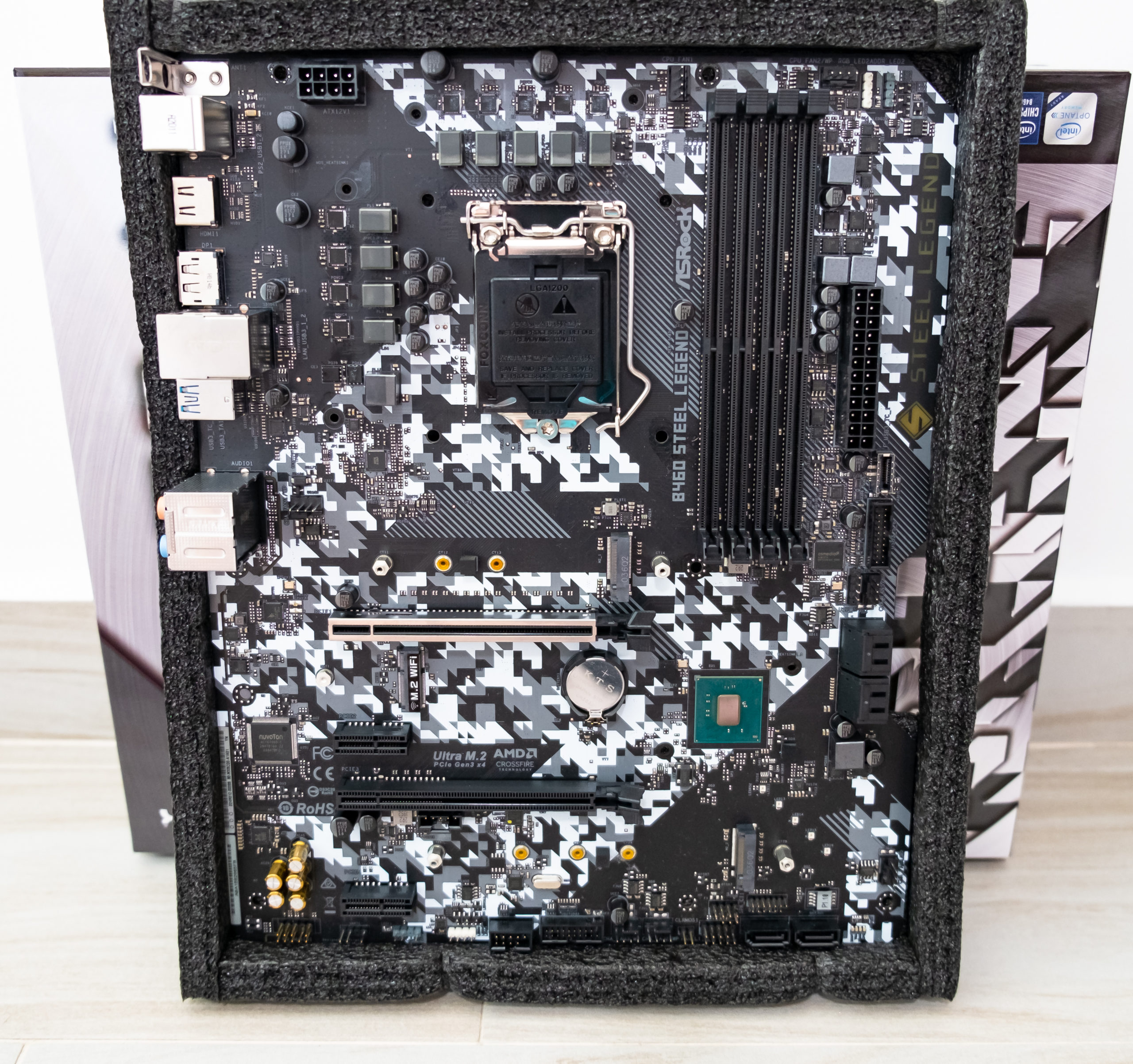
How We Test ASRock B460 Steel Legend?
Intel B460 Steel Legend is a midrange motherboard from ASRock. As such, our workstation, based on an B460 Steel Legend motherboard and Intel Core i5 10400 6 cores 12 threads processor. The ram we will be using is G.Skill’s F4-3600C16D- 16GTZNC memory kit. Zotac GeForce RTX 2080AMP Extreme graphics card and Samsung 840Evo Sata SSD is used as well to run with benchmark. On the Comparison, we will be using AMD ASRock B550 Taichi with AMD Ryzen 3600X to run side by side to see perform better.
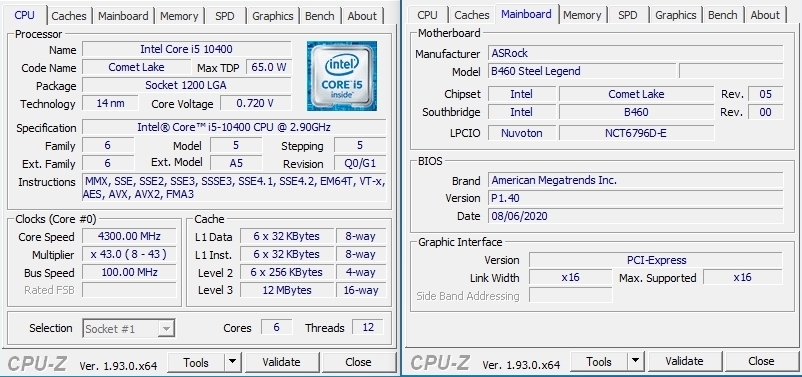
PCMark 10
It’s measures overall system performance for modern office work using tests based on real-world apps and activities. PCMark 10 is the latest version in Futuremark’s series of industry standard PC benchmarks. PCMark benchmarks measure complete system performance using tests based on real-world apps and activities. In PCMark 10, these tests include everyday tasks like browsing websites, video chat, writing and spreadsheets, photo and video editing, and playing games. This makes it an ideal benchmark for testing all types of Windows PC, from tablets and hybrids to notebooks and desktops.
| Essentials | Productivity | Digital Content Creation | Score | |
| ASRock B460 Steel Legend | 9310 | 7869 | 9477 | 6348 |
| ASRock B550 Taichi | 9203 | 8216 | 9876 | 6504 |
3Dmark Advanced Edition
3DMark includes everything you need to benchmark your PC and mobile devices in one app. Whether you’re gaming on a smartphone, tablet, notebook, or a desktop gaming PC, 3DMark includes a benchmark designed specifically for your hardware.
| Fire Strike Extreme | Time Spy | |
| ASRock B460 Steel Legend | 12595 | 10319 |
| ASRock B550 Taichi | 12621 | 10327 |
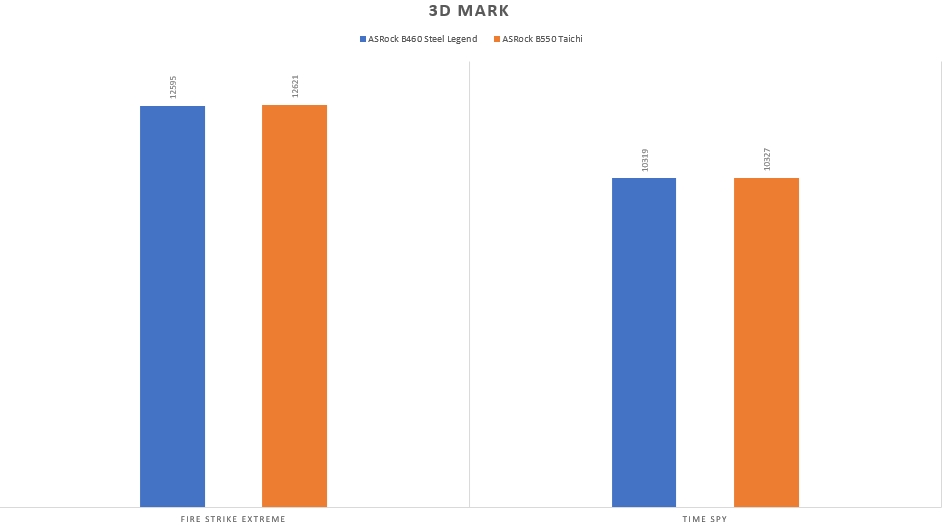
Geekbench 5
Geekbench 5 measures your hardware’s power and tells you whether your computer is ready to roar. How strong is your mobile or desktop system?
| Single Core | Multi Core | |
| ASRock B460 Steel Legend | 1179 | 6053 |
| ASRock B550 Taichi | 1287 | 7159 |
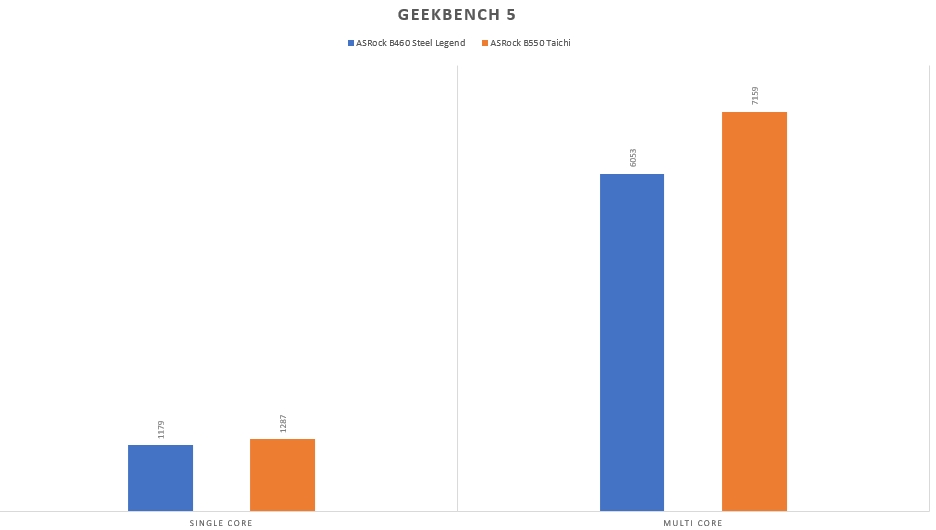

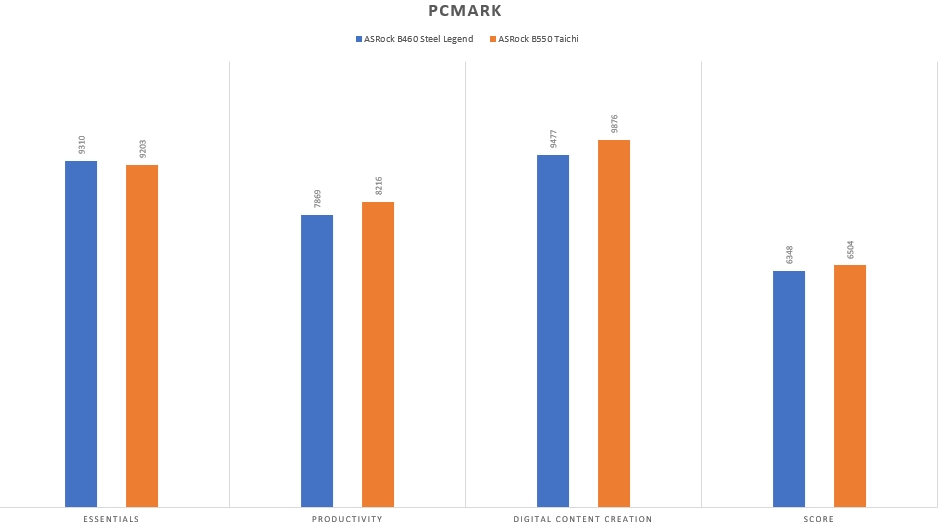




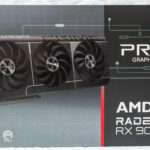
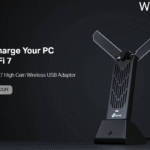

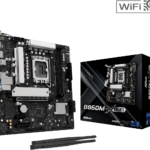
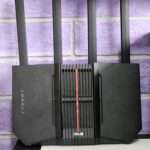

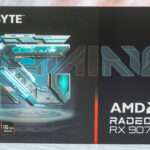
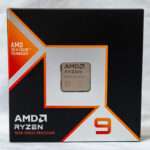

Rear I/O panel is a bit plain